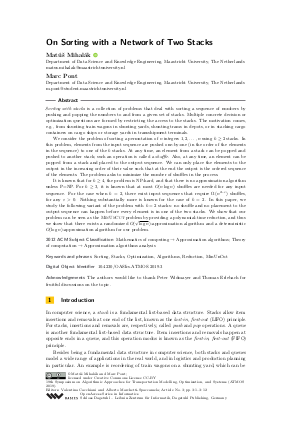OASIcs.ATMOS.2019.3.pdf
- Filesize: 0.49 MB
- 12 pages

 Creative Commons Attribution 3.0 Unported license
Creative Commons Attribution 3.0 Unported license


















Feedback for Dagstuhl Publishing